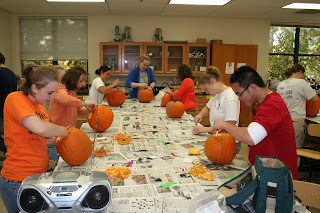
One of the greatest things about living in Kansas City is having the opportunity to attend professional sporting events like Chiefs, Royals, and Wizards games. On Sunday Aric and I took the bus to the Chiefs/Chargers game; and, since I'm from SE Texas and not yet acclimated, I thought I might in fact freeze to death in the upper deck of Arrowhead Stadium. The wind was howling up there and I really had no communication at all with my fingers (making it impossible to eat my peanuts), but the view was absolutely spectacular. At half time Aric bought me a fleece Chiefs blanket at the Fan Stand, permitting me to survive the remainder of the game (which the Chiefs unfortunately lost). The experience was awesome and made me feel like a true Kansas Citian.
















